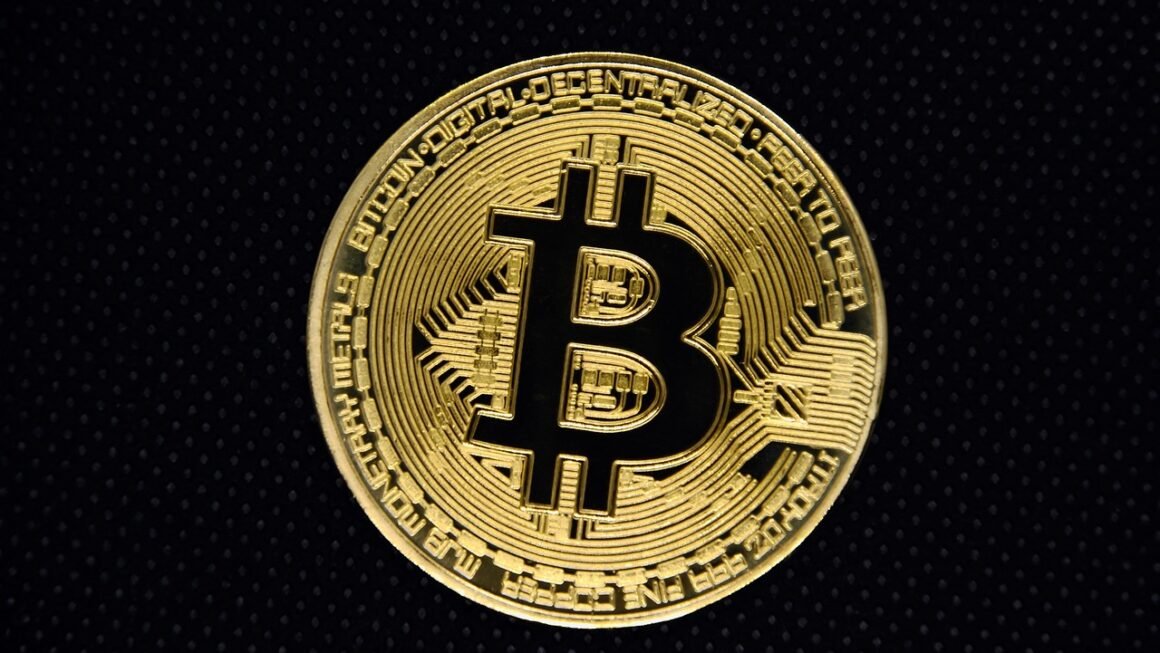Cryptocurrencies have exploded in popularity over the last decade, transforming from a niche technology to a mainstream asset class. As adoption continues to surge, so does the need for clear and consistent crypto regulations. These regulations aim to address concerns surrounding investor protection, financial stability, and illicit activities, while also fostering innovation within the digital asset space. This post delves into the complexities of crypto regulations worldwide, exploring the key challenges, current approaches, and the potential future of this evolving landscape.
Why Crypto Regulations Matter
Investor Protection
- Protecting investors from fraud and manipulation is a primary goal of crypto regulations. Many initial coin offerings (ICOs) and crypto projects have proven to be scams, resulting in significant financial losses for unsuspecting individuals.
- Example: The SEC’s enforcement actions against fraudulent ICOs and exchanges serve as a deterrent and aim to recover funds for defrauded investors. Clear guidelines on disclosure requirements for crypto projects can help investors make informed decisions.
- Regulations can mandate KYC (Know Your Customer) and AML (Anti-Money Laundering) procedures for crypto exchanges and custodians, reducing the risk of illicit funds entering the crypto ecosystem.
- Regulations provide a formal framework for accountability, increasing investor confidence and encouraging greater participation in the market.
Financial Stability
- Unregulated crypto markets can pose risks to financial stability due to their volatility and interconnectedness with traditional financial systems. A sudden crash in the crypto market could potentially trigger broader economic consequences.
- Regulations can help manage systemic risk by setting capital requirements for crypto businesses, implementing stress testing, and establishing clear rules for stablecoins and other crypto assets that have the potential to destabilize the financial system.
- Example: Proposed regulations in the EU (MiCA) aim to classify crypto assets and establish regulatory frameworks for different types of crypto-related activities, aiming to minimize systemic risk.
Combating Illicit Activities
- Cryptocurrencies, due to their pseudonymous nature, have been used for illicit activities such as money laundering, terrorist financing, and sanctions evasion.
- Regulations requiring crypto exchanges to implement robust AML/CFT (Combating the Financing of Terrorism) programs can help prevent the use of cryptocurrencies for illegal purposes.
- Example: The Financial Action Task Force (FATF) has issued recommendations for countries to regulate virtual asset service providers (VASPs) and implement the “travel rule,” which requires VASPs to share customer information during crypto transactions.
- Regulations can also help law enforcement agencies track and prosecute criminals using cryptocurrencies for illicit activities, increasing the risks and reducing the appeal of using crypto for such purposes.
Global Approaches to Crypto Regulations
United States
- The US regulatory landscape for crypto is fragmented, with different agencies (SEC, CFTC, IRS) claiming jurisdiction over various aspects of the industry.
- The SEC has taken the position that many crypto assets are securities and therefore subject to securities laws. They have pursued enforcement actions against unregistered securities offerings (ICOs) and exchanges operating without proper registration.
- The CFTC regulates crypto derivatives, such as Bitcoin futures, and has enforcement authority over fraud and manipulation in the commodity markets, including crypto.
- States are also enacting their own crypto regulations, creating a complex web of rules for businesses operating across state lines.
- Example: New York’s BitLicense requires crypto companies operating in the state to obtain a license, setting specific requirements for capital adequacy, AML compliance, and consumer protection.
European Union
- The EU is developing a comprehensive regulatory framework for crypto assets called the Markets in Crypto-Assets (MiCA) regulation.
- MiCA aims to provide legal certainty for crypto businesses, harmonize regulations across member states, and protect consumers and investors.
- It classifies crypto assets into different categories, such as utility tokens, security tokens, and e-money tokens, and establishes tailored regulatory requirements for each category.
- MiCA also includes provisions for stablecoins, requiring them to be backed by sufficient reserves and subject to stricter regulatory oversight.
Asia
- The regulatory landscape in Asia is diverse, with some countries adopting a welcoming approach to crypto while others have imposed strict bans.
- Singapore has emerged as a hub for crypto innovation, with a relatively progressive regulatory framework that balances innovation with investor protection.
- Japan was one of the first countries to regulate crypto exchanges, requiring them to register with the financial regulator and comply with AML/CFT requirements.
- China has taken a hardline stance on crypto, banning crypto trading and mining, citing concerns about financial stability and energy consumption.
- Example: South Korea has implemented regulations requiring crypto exchanges to verify user identities and report suspicious transactions to the authorities.
Challenges in Crypto Regulation
Defining Crypto Assets
- One of the key challenges in regulating crypto is defining what exactly constitutes a crypto asset. Different types of crypto assets exist, each with its own unique characteristics and potential risks.
- Determining whether a crypto asset is a security, commodity, or something else is crucial for determining which regulations apply.
- The lack of a clear and consistent definition of crypto assets can create uncertainty for businesses and hinder innovation.
Cross-Border Nature of Crypto
- Cryptocurrencies are inherently global and borderless, making it difficult to regulate them effectively within national jurisdictions.
- Crypto businesses can easily relocate to countries with more favorable regulatory environments, creating regulatory arbitrage opportunities.
- International cooperation is essential for addressing the cross-border challenges of crypto regulation and preventing regulatory evasion.
Technological Complexity
- The underlying technology of cryptocurrencies is complex and constantly evolving, making it challenging for regulators to keep up.
- Regulators need to have a deep understanding of blockchain technology, smart contracts, and other crypto-related technologies to develop effective regulations.
- Investing in regulatory technology (RegTech) solutions can help regulators monitor crypto markets, detect illicit activities, and enforce regulations more effectively.
Balancing Innovation and Regulation
- Regulations should aim to protect investors and maintain financial stability without stifling innovation in the crypto space.
- Overly strict regulations can drive crypto businesses to other jurisdictions or discourage innovation altogether.
- A balanced approach is needed that fosters innovation while also mitigating the risks associated with crypto assets.
- Example: Regulatory sandboxes, where new crypto products and services can be tested in a controlled environment, can help regulators understand the potential risks and benefits of these innovations before implementing widespread regulations.
The Future of Crypto Regulations
Increased Harmonization
- Greater international cooperation and harmonization of crypto regulations are likely to emerge in the future.
- Organizations like the FATF and the Financial Stability Board (FSB) are working to develop international standards for crypto regulation.
- Harmonized regulations can help reduce regulatory arbitrage, promote fair competition, and facilitate cross-border crypto transactions.
Focus on Stablecoins and DeFi
- Stablecoins and decentralized finance (DeFi) are likely to be the focus of increased regulatory scrutiny in the future.
- Stablecoins, due to their potential to become widely used payment instruments, pose unique risks to financial stability.
- DeFi protocols, which operate without intermediaries, present challenges for traditional regulatory frameworks.
- Regulations for stablecoins may include requirements for reserves, redemption mechanisms, and regulatory oversight.
- Regulations for DeFi protocols may focus on issues such as governance, security, and consumer protection.
Integration with Traditional Finance
- As cryptocurrencies become more mainstream, they are likely to become more integrated with traditional financial systems.
- This integration will require regulators to develop a comprehensive framework for regulating crypto-related activities within the broader financial ecosystem.
- Regulations may address issues such as crypto custody, crypto lending, and the use of crypto as collateral.
- Example: Banks and other financial institutions may be allowed to offer crypto-related services under certain conditions, subject to regulatory oversight.
Conclusion
The regulatory landscape for cryptocurrencies is constantly evolving. Understanding the key challenges, different approaches, and potential future developments is crucial for businesses, investors, and policymakers alike. Striking the right balance between fostering innovation and mitigating risks is essential for ensuring that cryptocurrencies can contribute to economic growth and financial inclusion while protecting consumers and maintaining financial stability. As the industry matures, a clear, consistent, and internationally coordinated regulatory framework will be vital for unlocking the full potential of cryptocurrencies and ensuring their sustainable development.



